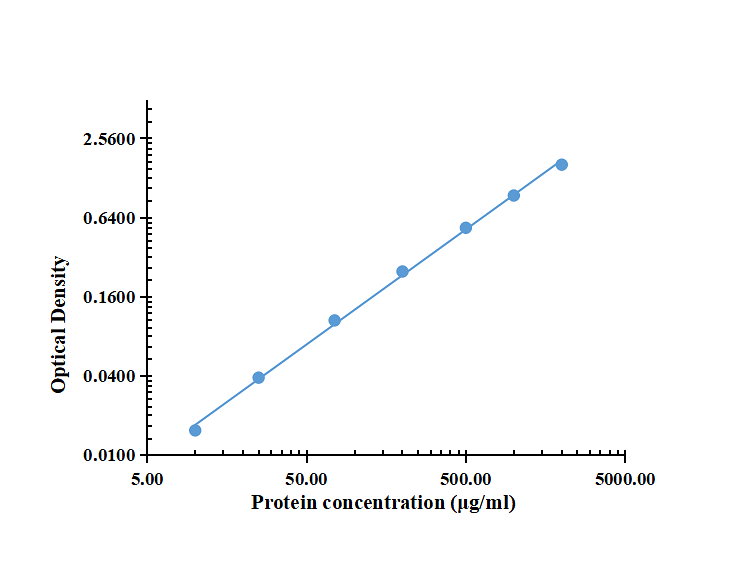HIV-1 lentiviral BCA protein assay kit
| Specification | 250 Test |
|---|---|
| Sensitivity | |
| Standard Curve Range | |
| Standard Curve Gradient | |
| Number of Incubations | |
| Detectable sample | Liquid phase sample of soluble substances. For example: serum, plasma, cell culture supernatant, tissue grinding liquid, etc. |
| Sample Volume | |
| Type | |
| Operation Duration |

| μg/ml | O.D. | Average | Corrected | |
|---|---|---|---|---|
| 0.00 | 0.1039 | 0.1039 | 0.1039 | |
| 10.00 | 0.1196 | 0.1190 | 0.1193 | 0.0154 |
| 25.00 | 0.1424 | 0.1430 | 0.1427 | 0.0388 |
| 75.00 | 0.2098 | 0.2094 | 0.2096 | 0.1057 |
| 200.00 | 0.3519 | 0.3540 | 0.3530 | 0.2491 |
| 500.00 | 0.6408 | 0.6380 | 0.6394 | 0.5355 |
| 1000.00 | 1.0423 | 1.0500 | 1.0462 | 0.9423 |
| 2000.00 | 1.7229 | 1.7210 | 1.7220 | 1.6181 |
Precision
Spike Recovery
Sample Values
| Sample Matrix | Sample Evaluated | Range (pg/ml) | Detectable (%) | Mean of Detectable (pg/ml) |
|---|---|---|---|---|
| Serum |
Product Data Sheet
Background: BCA
The BCA method is a method of judging the concentration of a protein by showing the color change of a sample at different concentrations. In the alkaline environment it provides, the protein can reduce the Cu2+ in the BCA reagent to Cu+, and the Cu+ can then be chelated with the BCA reagent to produce a blue-purple complex with a strong absorbance peak at 562 nm wavelength, and the protein concentration can be known by measuring the absorbance and combining it with the standard curve.

